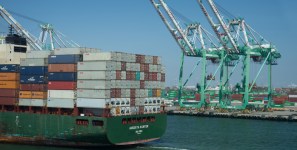Climate Change: Challenges and Opportunities for Global Shipping
The global shipping industry, responsible for transporting approximately 80-90% of goods worldwide, faces a complex landscape of risks intensified by climate change. As temperatures rise and weather patterns become more unpredictable, the impact on shipping routes and operations is profound.
The Good of Climate Change
One positive outcome of climate change is the emergence of new Arctic trade routes, such as the Northern Sea Route and the Northwest Passage. The melting ice opens up shorter paths between continents, potentially reducing travel time and fuel consumption. However, the reliability of these routes remains uncertain due to variable ice conditions and inadequate infrastructure.
The Bad of Climate Change
Conversely, traditional routes like the Panama Canal are facing challenges due to decreasing water levels caused by drought. This leads to longer passage times, increased costs, and congestion at either end of the canal. Additionally, severe weather events pose risks to maritime operations, necessitating costly adaptations in route planning and vessel design.
Read also: Panama Canal Water Levels to impact Westbound Trade Well Into 2024
The Ugly of Climate Change
The utilization of Arctic routes raises geopolitical concerns as nations vie for control over valuable resources. Russia’s military ambitions in the region highlight the potential for conflict, while regulatory and environmental issues surrounding new routes remain unresolved. Marine insurers must navigate these complexities while also adapting to regulatory changes such as IMO2050 and IMO2020.
Read also: Rising Carbon Emissions in Shipping: The Impact of Geopolitical Tensions
How Marine Insurers Are Responding
Marine insurers are investing in loss prevention technologies, focusing on climate change mitigation, and collaborating with the shipping industry to understand evolving risks. This includes embracing digitalization, preparing for extreme weather events, and developing innovative solutions to help clients adapt to a changing climate.
Final Thoughts
As the shipping industry grapples with the challenges of climate change, insurers are at the forefront of innovation and adaptation. By leveraging data, understanding evolving risks, and collaborating with industry stakeholders, insurers are poised to support clients in navigating the complexities of a changing maritime landscape.





Leave a Reply